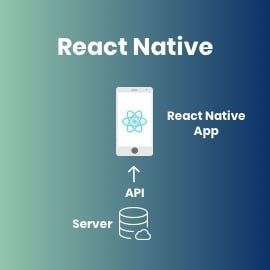React and AngularJS are both highly developed as well as extensively adopted JavaScript (JS) technologies in the marketplaces. We utilize them to build engaging single-page applications (SPAs). The number of JS tools for swift single-page application development is continuously mounting, making the selection of which technology to trust is turning a tough decision for developers.
Use of AngularJS Vs React JS
Both React JS and AngularJS are at present utilized by multiple ranges of businesses all over the world. AngularJS has been incorporated in all the topmost 10 JavaScript frameworks since its launch in 2009. This Model–View–Controller framework has become enormously accepted among web developers.
React is more commonly used by JavaScript programmers by a React JS development company, even though it is, in fact, a library and not a framework. The React library only has a View which is short of Model and Controller elements. So how did React turn so trendy and popular? And how can we rationally evaluate a framework (AngularJS) with a library (React)?
Let’s look at the React JS vs Angular JS comparison in the table underneath.
| Technology | React JS | Angular JS |
|---|---|---|
| Concept | Introduces HTML in JavaScript Works with virtual DOM Server-side rendering | Introduces JavaScript in HTML Works with the real DOM Client-side rendering |
| Data Binding | 1 way binding | 2 way binding |
| Developed by | ||
| Technology | JavaScript library with View in MVC; needs Flux to implement the required architecture | Comes with Full-fledged MVC framework being coded and written in JavaScript |
| Dependencies | Needs additional tools to handle dependencies | Handles dependencies automatedly |
| Language | JavaScript + JSX | JavaScript + HTML |
| Last version | React 15 | AngularJS 1.6.0 RC2 |
Comparison on the basis of Performance Levels
Angular
On performance levels, Angular 1.x and higher depends on two-way data binding. This concept is a foundation of “dirty checking,” a method that can turn your AngularJS application laggy. AngularJS builds a watcher for every binding to monitor changes in the DOM.
Once the View updates and turns “dirty,” AngularJS compares the new value with the bound value and executes the $digest loop. The $digest loop checks the values and changes. The loop doesn’t stop working waiting it checks all watchers and applies all needed alterations to both the View and the Model. This is why performance goes down. Unlike React, an AngularJS Development Company applies modifications in the real DOM in the browser.
React
The creators of React came up with the ideology of the virtual Document Object Model, which is one of the best benefits of React in contrast with mature frameworks, together with AngularJS. When your HTML document is loaded, React builds a lightweight DOM tree from JavaScript objects and stores it on your server. When a user, puts data in the <input> field in the browser, React generates a new virtual DOM and then matches it with the formerly saved DOM. The library searches dissimilarity flanked by two object models in a way that enables the virtual DOM rebuilding it once again, but with novel distorted HTML. All this work is done on the server, which decreases the load on the browser.
Now, as a substitute of sending entirely new HTML to the browser, React sends the HTML only for the altered components. This systematic approach is much more proficient than what AngularJS provides.
In relation to one-way data binding, React doesn’t utilize watchers to monitor modifications or changes in the real DOM. So, React makes it easy to control application performance. But this doesn’t mean we cannot generate a quick application in AngularJS.
Key Takeaways
Both AngularJS and React are useful for writing single-page applications. However, some developers may say that React is superior to AngularJS and vice versa. What’s in fact best for a given project, however, depends on how you use these technologies.








